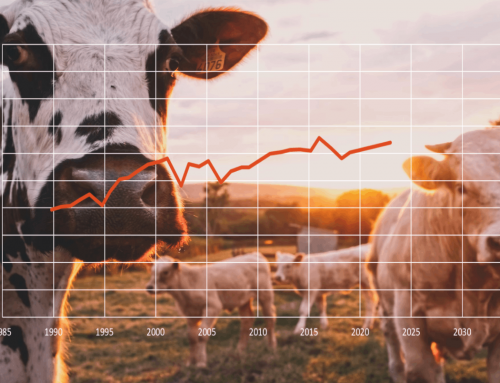Stop focusing all your efforts on creating operating efficiencies and explore innovation to create new margin
The innovation age is upon us and change is the only constant. Iterative change to industry and markets is faster and more dynamic than at any other point in history. In times of disruption and uncertainty, businesses tend to fall back to what they know and we see businesses tightening their belts and doing more of the same. We hear lots of talk about the dollar we save being a dollar earned and other catch cries of the frugal CFO.
If belt tightening is our key business metric, the ride isn’t going to be fun. Without a strong vision on where to find growth, a mission of efficiency can lead to ruin. When we focus on efficiency at any price the price may be too high.
Instead, if we look to the future and opportunities that consumer trends are creating in the market for new products, there is a chance to disrupt and knock away all competitors, improving your bottom line on the way.
Hurrying to the bottom
Most of our food production business, value adders and brands are market driven. Having worked for years, to develop a product and brand that attracts a certain amount of market loyalty, businesses are often loath make changes. This aversion to change permeates parts of the business that could instead be being leveraged to create more value.
The desire to do more of what we know is an innately human quality and humans surround themselves with information that matches their existing beliefs. In business this means we run the risk of letting business as usual guide our path forwards. As Abraham Maslow said, ” it is tempting, if the only tool you have is a hammer, to treat everything as if it were a nail”.
In a mature market this leads to our business planning to focus on becoming more efficient. In our integrated supply chain if our focus is efficiency we’re in a race to the bottom.
Imagine two fiercely competitive food companies with roughly equal market share, focussed only on expanding and compounding their current position through running leaner and leaner. After a decade of efficiency through tight control of CAPEX and OPEX without a focus on revenue, each business has been milked dry and the only place left to make cuts is the margin – the end is in sight.
Switching focus to earning
It’s important to note that not all parts of our business do the same thing and thus we can’t measure or incentivise them in the same manner. There are parts of our food businesses designed to make money and parts that lead to cost. If we make the mistake of forcing all parts of our operation to focus on savings and running lean, our business will suffer the fate of dwindling revenue and constant erosion of margin.
So in the battle for market share and margin; do you want your assets to be a sword or a shield? Do you want to empower your people, brand, business and supply chain partners to make the business more money in the uncontested blue oceans of the market? Or will you prevent it through never-ending questions for reduction in cost?
Innovation can be elusive and for businesses, it’s an intangible that can’t be grasped or adopted but it is through innovation in every area that businesses can seek growth and revenue.
Finding value
International speaker and authority on food marketing, Professor David Hughes (a.k.a. Dr. Food), talks about known value items and avoiding the commoditisation of our food products to avoid this race to the bottom. David says “People will pay more. Whether it’s ‘known provenance’, ‘grass fed,’ ‘organic,’ ‘free range’ or ‘dry-aged,’ when it comes to food there is margin in adjectives.”
The unsaid in David’s comment is a product that is innovative, has a story and delivers some intangible aspirational value to the consumer can generate a greater price point and is frequently no more expensive than another product to produce. This will lead to an uncontested market opportunity and greater revenue and margin.
Want proof?
Chobani yoghurt are a global juggernaut in the dairy game and in, what seemed like the blink of an eye, reinvented a category and left the multinationals who owned the yoghurt category wondering what happened. Chobani didn’t do this through focussing on lean operations. They did it through quality product made within integrity of process and product. They based their ‘sell’ on taste (quality) and targeted audiences previously neglected by the yoghurt marketers at the likes of General Mills.
Chobani disrupted the stagnant status quo and did it by approaching the market in a way that meant they had no discernible competition.
Another one? Kalfesh grow vegetables and lots of them. They’re working with their neighbours and suppliers to deliver a highly nutritious product with a great story (adjectives) to a health and taste conscious market. The most interesting part of their story though is how they make waste reduction part of their story and link it to nutrition for children. With some innovative thinking and processing they’re turning $50 per tonne waste product into $5,000 per tonne snacking carrots for kids.
If you want to know how this innovation was achieved, the essence is equal parts, determination, hand work and market research.
For the parts of a business that should be generating value and revenue, innovation is the game.
No innovation in isolation…
Innovation is rarely the product of a lone manager or executive team pondering their business. When looking for a path forwards to new opportunity, proximity to the current business brings its own challenges.
In the food game a simple new means of packaging a product can change the value proposition to the market. In the kids snack food sector alone you need not look beyond the sipahh straw, individually wrapped cheese slices, popper-juice and Babybel cheese to find brands that with little re-engineering, have driven yield and received a jump on the market. These products have changed their business and in turn changed the industry.
Learn from the global innovation schools of thought to achieve this in your business. Explore design led thinking and engage creative and strategic partners to expand your horizons. Assembling advertising agencies, trusted advisory group, facility and supply chain design and delivery specialists with a strong, experienced facilitator could lead to breakthrough in many diverse areas.
Once you’ve connected with great people and innovation processes exploring brand, product innovation, new product development, packaging, waste reduction, flexible facilities, new machinery, automation and new thinking in taking your product to market (figuratively and literally), the future of your is in making more not manufacturing more.




